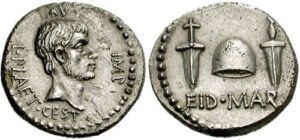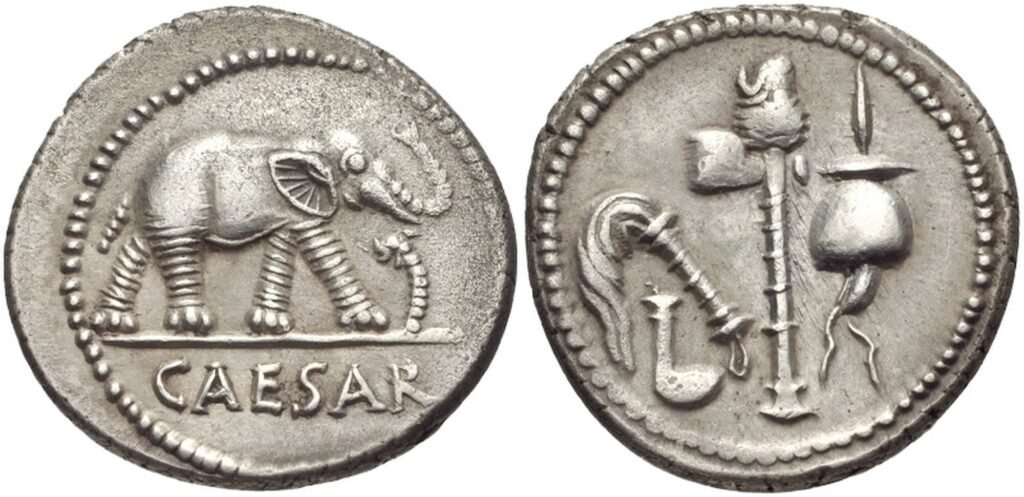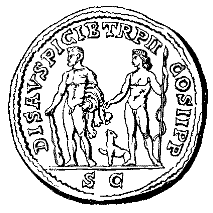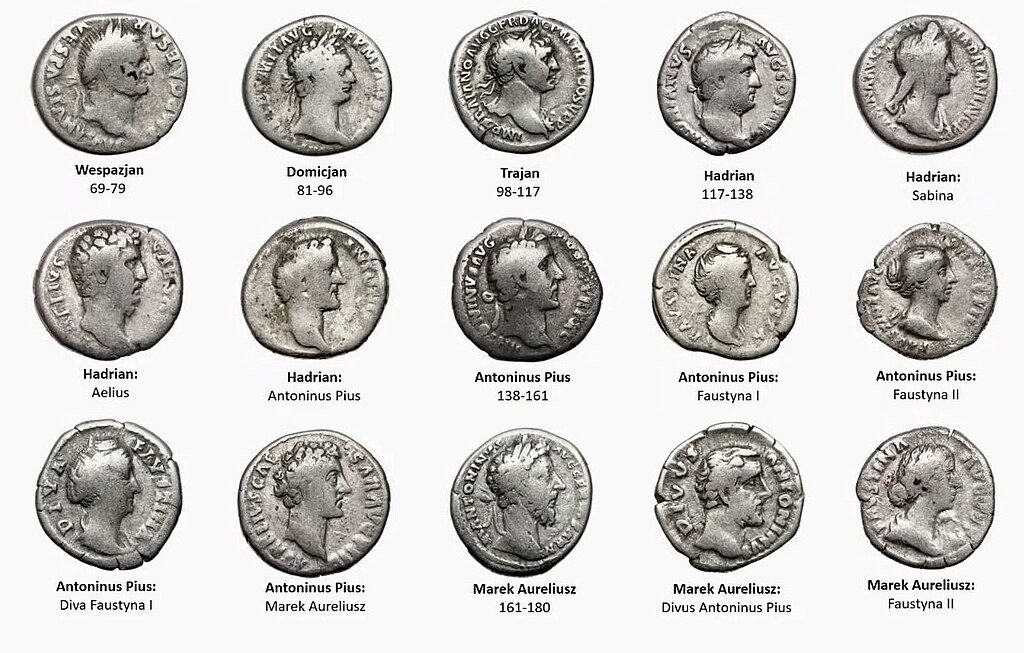Top 25 Roman Silver Coins: A Collector’s Treasure List
Roman silver coins—especially the denarius—offer collectors an unmatched glimpse into the empire’s wealth, propaganda, and artistry. These coins were not only currency but miniature billboards of emperors, gods, victories, and ideals. If you’re collecting Roman coins or simply fascinated by ancient money, this list of Top 25 Roman Silver Coins is your essential guide.
Each coin in this curated list includes:
- Emperor or issuer
- Mint & date (approx.)
- Obverse & reverse descriptions
- Historical context
- Estimated auction value range
Let’s explore the most iconic silver coins of ancient Rome.
Top 25 Roman Silver Coins
1. Julius Caesar – Elephant Denarius (49–48 BC)
- Obverse: Elephant trampling a serpent
- Reverse: Religious implements (lituus, culullus, aspergillum)
- Meaning: Caesar’s power triumphing over evil or enemies
- Auction Range: $1,000–$5,000+
2. Brutus – EID MAR Denarius (43–42 BC)
- Obverse: Bust of Brutus
- Reverse: Two daggers and liberty cap with “EID MAR”
- Meaning: Commemorates Caesar’s assassination on the Ides of March
- Auction Range: $150,000–$4 million+
- Note: One of the most famous Roman coins ever struck
3. Mark Antony – Legionary Denarii (32–31 BC)
- Obverse: Galley ship
- Reverse: Eagle between standards
- Meaning: Propaganda for Antony’s military
- Auction Range: $100–$1,000
4. Augustus – Denarius with Gaius and Lucius Caesars (2 BC)
- Obverse: Laureate head of Augustus
- Reverse: Gaius and Lucius standing
- Meaning: Promotes dynastic succession
- Auction Range: $500–$2,000
5. Tiberius – “Tribute Penny” Denarius (14–37 AD)
- Obverse: Emperor Tiberius
- Reverse: Livia as Pax, seated
- Meaning: Thought to be the coin of the Biblical “Render unto Caesar” passage
- Auction Range: $300–$2,500+
6. Caligula – Denarius with Agrippina Senior (37–41 AD)
- Obverse: Caligula
- Reverse: Portrait of his mother, Agrippina
- Meaning: Family honor and propaganda
- Auction Range: $3,000–$15,000+
7. Claudius – Denarius with Constantia (41–54 AD)
- Obverse: Laureate head of Claudius
- Reverse: Constantia standing with spear
- Meaning: Emphasizes firmness and legitimacy
- Auction Range: $800–$3,000
8. Nero – Denarius with Temple of Janus (54–68 AD)
- Obverse: Nero’s bust
- Reverse: Closed doors of Temple of Janus (peace)
- Meaning: Celebrates peace in the empire
- Auction Range: $1,500–$6,000
9. Galba – Denarius with S.P.Q.R. Inscription (68–69 AD)
- Obverse: Emperor Galba
- Reverse: S P Q R within wreath
- Meaning: Return to Republican ideals
- Auction Range: $800–$3,500
10. Otho – Denarius (69 AD)
- Obverse: Bust of Otho
- Reverse: Pax or other deity
- Meaning: Short-lived emperor’s authority
- Auction Range: $1,500–$7,000+
11. Vitellius – Denarius (69 AD)
- Obverse: Emperor Vitellius
- Reverse: Victory or religious theme
- Auction Range: $500–$2,500
12. Vespasian – Denarius with Judaea Capta (71 AD)
- Obverse: Vespasian
- Reverse: Mourning Jewess under palm tree
- Meaning: Celebrates victory in the Jewish War
- Auction Range: $800–$3,000
13. Titus – Colosseum Denarius (80–81 AD)
- Obverse: Titus
- Reverse: Amphitheatrum Flavium (Colosseum)
- Auction Range: Extremely rare – $20,000+
14. Domitian – Minerva Reverse Denarius (81–96 AD)
- Obverse: Domitian
- Reverse: Minerva with spear and shield
- Meaning: Domitian’s divine protector
- Auction Range: $300–$1,200
15. Nerva – Denarius with Liberalitas (96–98 AD)
- Obverse: Nerva
- Reverse: Liberalitas giving coins
- Auction Range: $400–$2,000
16. Trajan – Denarius with Dacian Captive (98–117 AD)
- Obverse: Trajan
- Reverse: Dacian captive seated
- Meaning: Dacian War victory
- Auction Range: $600–$2,500
17. Hadrian – Travel Series Denarii (117–138 AD)
- Obverse: Hadrian
- Reverse: Personifications of provinces visited (e.g., Aegyptus)
- Meaning: Celebrates his imperial journeys
- Auction Range: $800–$4,000+
18. Antoninus Pius – Denarius with Annona (138–161 AD)
- Obverse: Antoninus
- Reverse: Annona with cornucopia and modius
- Meaning: Grain supply and prosperity
- Auction Range: $300–$1,500
19. Marcus Aurelius – Denarius with Virtus (161–180 AD)
- Obverse: Marcus Aurelius
- Reverse: Virtus with spear and shield
- Meaning: Emphasizes imperial courage
- Auction Range: $400–$2,000
20. Lucius Verus – Concordia Denarius (161–169 AD)
- Obverse: Verus
- Reverse: Concordia seated
- Auction Range: $300–$1,000
21. Commodus – Denarius with Hercules (180–192 AD)
- Obverse: Commodus
- Reverse: Hercules with club and lion skin
- Auction Range: $500–$2,500
22. Septimius Severus – Denarius with Victory (193–211 AD)
- Obverse: Severus
- Reverse: Victory advancing
- Auction Range: $300–$1,500
23. Caracalla – Denarius with Serapis (198–217 AD)
- Obverse: Caracalla
- Reverse: Serapis, Egyptian god
- Meaning: Eastern religious influence
- Auction Range: $400–$1,800
24. Elagabalus – Denarius with Sol (218–222 AD)
- Obverse: Elagabalus
- Reverse: Sol radiate
- Meaning: Emphasis on solar cult
- Auction Range: $250–$1,200
25. Philip I – Denarius with Roma (244–249 AD)
- Obverse: Philip I
- Reverse: Roma seated with spear
- Auction Range: $200–$1,000
Final Thoughts
These top 25 Roman silver coins are more than collectibles—they’re fragments of empire, engraved in silver. Each one tells a story of power, politics, conquest, or religion. Whether you’re just starting or adding rare pieces to your collection, this list offers a roadmap to the most meaningful denarii in Roman numismatics.
🧭 Ready to start your collection?
👉 Explore verified listings at NumisDon.com
👉 See our full Roman Coins section
Next article:
📘 Top 25 Byzantine Gold Coins – Read More!



